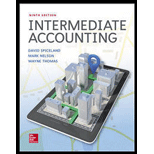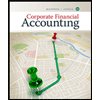
Concept explainers
Ethics Case 9–11
Overstatement of ending inventory
• LO9–7
Danville Bottlers is a wholesale beverage company. Danville uses the FIFO inventory method to determine the cost of its ending inventory. Ending inventory quantities are determined by a physical count. For the fiscal year-end June 30, 2018, ending inventory was originally determined to be $3,265,000. However, on July 17, 2018, John Howard, the company’s controller, discovered an error in the ending inventory count. He determined that the correct ending inventory amount should be $2,600,000.
Danville is a privately owned corporation with significant financing provided by a local bank. The bank requires annual audited financial statements as a condition of the loan. By July 17, the auditors had completed their review of the financial statements which are scheduled to be issued on July 25. They did not discover the inventory error.
John’s first reaction was to communicate his finding to the auditors and to revise the financial statements before they are issued. However, he knows that his and his fellow workers’ profit-sharing plans are based on annual pretax earnings and that if he revises the statements, everyone’s profit-sharing bonus will be significantly reduced.
Required:
1. Why will bonuses be negatively affected? What is the effect on pretax earnings?
2. If the error is not corrected in the current year and is discovered by the auditors during the following year’s audit, how will it be reported in the company’s financial statements?
3. Discuss the ethical dilemma John Howard faces.
Want to see the full answer?
Check out a sample textbook solution
Chapter 9 Solutions
INTERMEDIATE ACCOUNTING (LL) W/CONNECT
- Meridian Corporation started the year with total assets of $480,000 and total liabilities of $215,000. During the year the business recorded $425,000 in revenues, $240,000 in expenses, and dividends of $75,000. Stockholders' equity at the end of the year was____.arrow_forwardI am trying to find the accurate solution to this financial accounting problem with the correct explanation.arrow_forwardCornell Corporation plans to generate $960,000 of sales revenue if a capital project is implemented. Assuming a 30% tax rate, the sales revenue should be reflected in the analysis by:arrow_forward
- I am looking for the most effective method for solving this financial accounting problem.arrow_forwardWhat is the total manufacturing costs charged (debited) to work in process during November?arrow_forwardCan you solve this general accounting problem using accurate calculation methods?arrow_forward
 Corporate Financial AccountingAccountingISBN:9781305653535Author:Carl Warren, James M. Reeve, Jonathan DuchacPublisher:Cengage Learning
Corporate Financial AccountingAccountingISBN:9781305653535Author:Carl Warren, James M. Reeve, Jonathan DuchacPublisher:Cengage Learning Corporate Financial AccountingAccountingISBN:9781337398169Author:Carl Warren, Jeff JonesPublisher:Cengage Learning
Corporate Financial AccountingAccountingISBN:9781337398169Author:Carl Warren, Jeff JonesPublisher:Cengage Learning Financial & Managerial AccountingAccountingISBN:9781337119207Author:Carl Warren, James M. Reeve, Jonathan DuchacPublisher:Cengage Learning
Financial & Managerial AccountingAccountingISBN:9781337119207Author:Carl Warren, James M. Reeve, Jonathan DuchacPublisher:Cengage Learning


